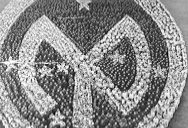
|
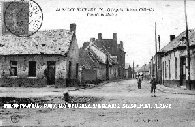
|
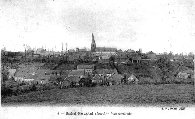
|
|
|
|
|
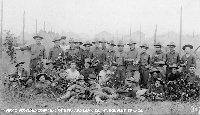
|

|
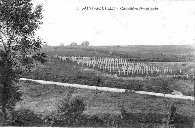
|
|
|
|
American Cemetery, St. Soupet |
 Astronomy furnished the inspiration for the distinctive shoulder
patch insignia of the Twenty-seventh Division, American Expeditionary Forces,
writes Herbert E. Smith in the Army Recruiting News. The division of New
York National Guard men adopted Orion-the Seven Sisters of the Pletsdes--as
a part of its finished design. On a circled background of jet black appeared
these seven stars in red, with the monogram NYD (New York Division) likewise
in red. The colors black and red have a special significance also; the black
for iron, the red for the blood.
Astronomy furnished the inspiration for the distinctive shoulder
patch insignia of the Twenty-seventh Division, American Expeditionary Forces,
writes Herbert E. Smith in the Army Recruiting News. The division of New
York National Guard men adopted Orion-the Seven Sisters of the Pletsdes--as
a part of its finished design. On a circled background of jet black appeared
these seven stars in red, with the monogram NYD (New York Division) likewise
in red. The colors black and red have a special significance also; the black
for iron, the red for the blood.
Another happy coincidence in this design:The Orion corresponded with the name O'Ryan, and the 27th,s division commander was Maj. Gen. John F. O'Ryan, who took the New Yorkers over and brought them back.
Called into federal service on July.15, 1917, the Twenty-seventh Division hastily recruited to greater personnel strength and, late In August, concentrated at Camp Wadsworth, near Spartanburg, S. C., for intensive training. In the Spring of 1918 the movement toward embarkation camps began. The advance detachment Ieft Hoboken May 2 and arrived at Brest, France, May 10. Late In June the list units of theTwenty-seventh Division had arrived safely overseas.
Until July 24 the division was in the final stages of Intensive training under British mentors, ln Picardy and Flanders. On July 25 the Empire Statemen, less the artillery and the 102d Supply Train, participated in the occupation of the Dickebusch Lake and Scherpenberg sectors in Flanders. A few days more than a month later the operation merged into the Ypres-Lys action, and then, from Aug. 19 to Sept.3, the division was on its own.
The great Somme "push," lasting from Sept. 24 to Oct. 1, saw the 27th in some severe fighting along the St.Quentin Canal Tunnel, one of the out-lying strong points of the supposedly impregnable Hindenburg line.Rehabilitation of the 27th was necessary at the conclusion of this first phase of the Somme "Push," and the New Yorkers moved back Into reserve on Oct. 1. Six days later the Twenty-Seventh Division was back into action again, moving by easy stages toward Busigny on the heels of the retiring Germans.
There was no further rest for theNew Yorkers until late in October. In the meantime they, with the British ,forces and the Thirtieth Division,American Expeditionary Forces, had accomplished the supposedly impossible by cracking the vaunted Hindenburg line wide open.
The 52d Field Art. Brigade and the 102d- Ammunition Train of the New York Division had not gone with the rest of the Twenty-seventh Division t othe British front in Flanders. They had moved up on Oct. 28, to the support of the Seventy-ninth Division In the Argonne.
Meanwhile the Twenty-seventh Division units which had
seen heavy action in Flanders, had also moved back to an area near the French
seaport of Brest. Commanders of the Twenty-seventh Division included Maj.
Gen. John P.O'Ryan, Brig. Gen. Charles L. Phillips (ad interim), and Brlg.
Gen. Palmer E.Pierce (ad Interim) --- only three commanding officers, and
two of those serving only for Ad Interim periods.
Images of the 108th
and
Scenes from the St. souplet
(click on image to enlarge)

|

|

|
|
|
|
|

|

|

|
|
|
|
American Cemetery, St. Soupet |
[ Back ]
Updated 1/28/98